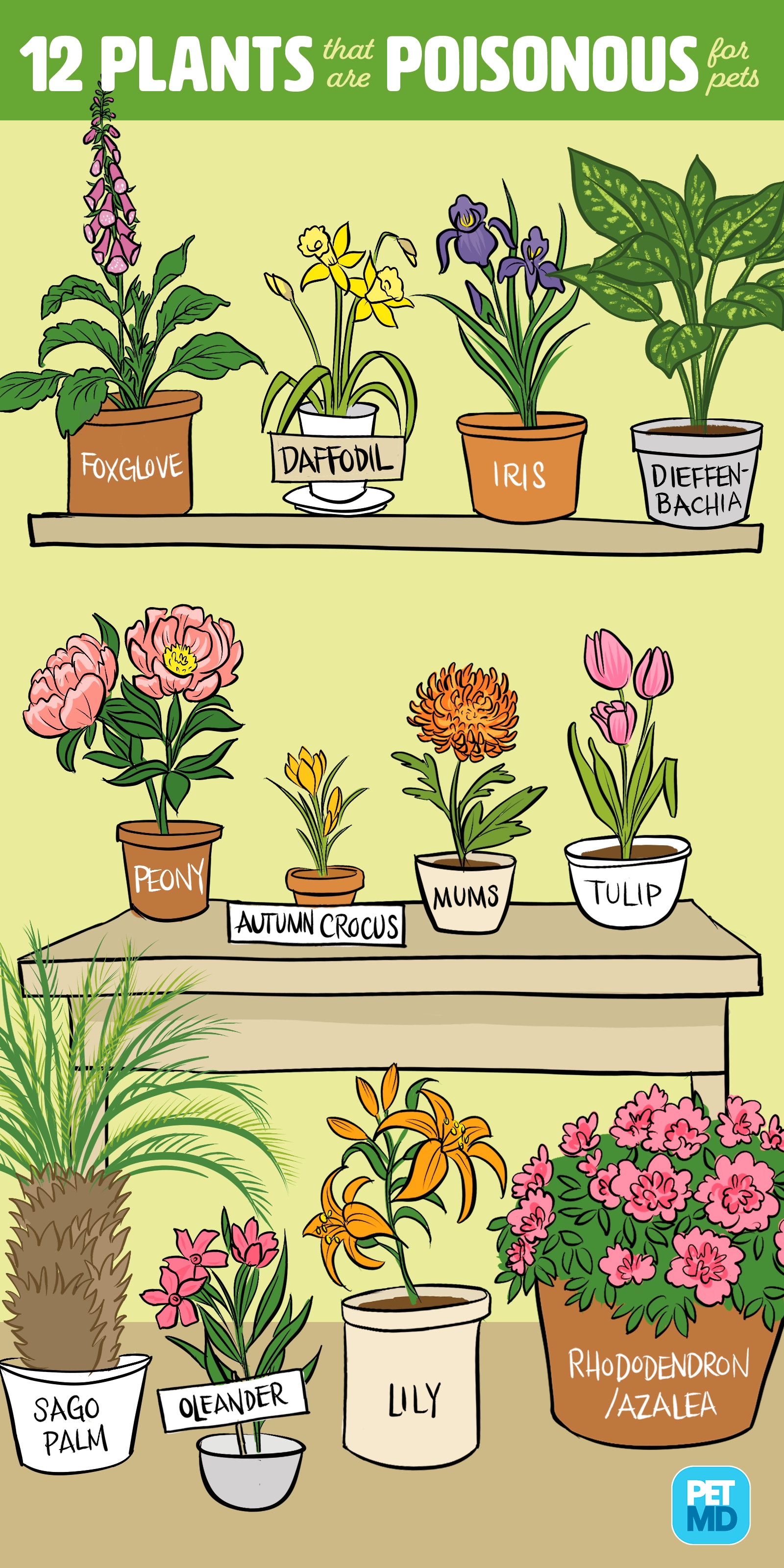TADDY FEEDS INVESTMENT LIMITED
Tuesday, September 10, 2019
TADDY FEEDS INVESTMENT LIMITED: 6 Things in Your House That Could Be Triggering Yo...
TADDY FEEDS INVESTMENT LIMITED: 6 Things in Your House That Could Be Triggering Yo...: 6 Things in Your House That Could Be Triggering Your Pet’s Allergies. Did you know that your pet could be allergic to everything...
6 Things in Your House That Could Be Triggering Your Pet’s Allergies
6 Things in Your House That Could Be Triggering Your Pet’s Allergies.

Did you know that your pet could be allergic to everything from their own beds to your other pets? Unfortunately, figuring out what could be causing allergies in your dog or cat can be a lengthy process—and a particularly hard one when dealing with household allergens.
Potential Household Triggers for Your Pet’s Allergies
Here are six unexpected causes of household pet allergies and how to determine if your dog or cat is reacting to them.
Dust Mites
Dust mite allergies are more common than you think, says Dr. Ashley Rossman, DVM, CVA, from Glen Oak Dog & Cat Hospital. In fact, dust mites, molds and pollens are the three major airborne allergens that pets are susceptible to, she says.
While every pet can respond differently—and with varying levels of severity—to dust mites, most pets will demonstrate allergies to dust mites through their skin, says Dr. Rossman.
“They may become itchy, the skin may become red and inflamed,” and they may ultimately suffer with dermatitis, says Dr. Rossman.
Unless you wash it regularly, your dog’s own bed can trigger an allergic reaction. “Pillows, bedding and carpets are frequent sources for dust mites, as well as hard-to-clean areas underneath sofas or beds,” says Dr. Travis Arndt, DVM, assistant medical director at the Animal Medical Center of Mid-America.
Dog Bed Stuffing
“Certain materials and fabrics in your pet’s bed can cause an allergic reaction, but it’s more likely that it is the dust mites causing your pet to have an allergic reaction,” says Dr. Arndt.
“There are hypoallergenic beds on the market, but regardless of the type of bed your pet uses, it is important to wash it frequently to get rid of the dust mites and to remove the dead skin from the bed,” he says.
If that doesn’t help, Dr. Rossman recommends checking if the bed is made with wool, down or feather-based materials, as these are more likely to cause allergic issues.
“I have also seen animals that have contact allergies to wool, found in carpets or sometimes bedding,” says Dr. Gary Richter, MS, DVM, CVC, CVA, who combines conventional and holistic treatment methods in his practice.
Dr. Rossman says that “100 percent cotton is much less likely to cause an allergic reaction.”
Other Pets
Your pet can actually be allergic to new animals that are introduced into the home. “Pets can be allergic to a new animal, and, just like people, they can develop allergies to dander at any point in their lives,” says Dr. Arndt.
While this isn’t a common allergy, it does happen and could be something to look into if you can’t seem to find any other causes for your pet’s allergy, Dr. Arndt says.
“Typically, allergic pets have reactions to more than one thing in the environment, so it’s best to talk to your veterinarian about finding the source of the allergic reaction before jumping to the conclusion that another pet is the cause,” Dr. Arndt explains.
Chemical Skin Irritants
Contact dermatitis can be caused by a lot of things, with household cleaners ranking high on the list, says Dr. Richter.
“This is a good reason to use all-natural cleaners, as they will be less likely to cause contact dermatitis,” says Dr. Richter.
In addition to abrasive cleaners, you should also watch out for shampoos, detergents, soaps and hair sprays as potential possible contributors to pet allergies, Dr. Rossman says.
“Some laundry detergents and soaps can make fabrics more irritating and thus generate an allergic response, so look for organic, unscented detergents that are free from dyes and perfumes to wash anything your pet sleeps on,” says Dr. Rossman.
The problem with contact dermatitis is that the cause of the problem can be very difficult to determine, as the number of products used in many homes is quite large, explains Dr. Arndt.
“One of the most surprising yet frequent causes of contact dermatitis is seen in dogs who lounge by the pool or swim,” says Dr. Arndt. “Exposure to the chlorine-treated pool water over time can cause an allergic reaction.”
Indoor Plants
There are many indoor and outdoor plants that might trigger an airborne or contact allergic reaction in your pet, says Dr. Arndt. “Any flowering houseplant has the potential to cause pets to have an allergic reaction,” he says. “Symptoms typically occur seasonally and present as itchy skin, excessive grooming, rashes, sneezing and eye discharge.”
No matter what type of houseplants you have, be aware that the potting soil may be harboring mold, which can also cause allergies in your pet, says Dr. Arndt. “To prevent mold in the soil, don’t overwater your plants, and keep them in a well-lit and ventilated room,” Dr. Arndt says.
Smoke
Pets—cats especially—can be very sensitive to smoke, as it is a respiratory irritant, says Dr. Richter. “Smoke of any kind can cause issues, including smoke from cooking,” he explains.
Pets who live in homes with people who smoke cigarettes are more likely to develop atopic dermatitis, an allergic reaction that causes itchy skin, says Dr. Arndt. “Some pets can suffer from asthma from inhaling the chemicals and irritants,” he adds.
Other signs that your pet might be having an allergic reaction to smoke include shortness of breath, watery eyes, sneezing or difficulty breathing, says Dr. Rossman. If you suspect your pet is allergic or is showing signs of breathing difficulty, talk to your veterinarian right away.
How to Determine What’s Causing the Allergic Reaction
If you think your furry companion is having an allergic reaction to something in your home, you can always do an elimination trial. “Try thinking about anything new in the home, such as a new laundry detergent, air freshener or cleaning product,” says Dr. Arndt.
If you haven’t added any potential allergens lately, Dr. Richter recommends eliminating as many possible allergens or irritants as possible and seeing if your pet gets better. “Then, you could slowly add things back in and monitor,” says Dr. Richter.
Minimizing the Allergens in Your Home
In addition to removing products that might be causing pet allergies, the best advice is to clean thoroughly, wash bedding often and clean with all-natural materials, says Dr. Richter. “Also, a HEPA filter can help pull dust and pollen out of the air,” says Dr. Richter.
Vacuuming frequently using a high-suction vacuum and disinfecting surfaces regularly are also musts if you share your home with an allergic pet, says Dr. Rossman.
“Changing furnace filters monthly, avoiding wool blankets in the home and adding plug-in air purifiers in every room can also be very effective,” says Dr. Rossman.
Be sure to talk to your veterinarian about your pet’s allergies and what might be causing them. Your veterinarian can provide more in-depth guidance and can recommend treatment and management options.
Friday, September 6, 2019
12 Plants That Are Poisonous for Dogs and Cats
12 Plants That Are Poisonous for Dogs and Cats
Adding a little greenery to your home decor is always a nice finishing touch—and houseplants can help cleanse the air too—but if you have pets, be careful which plants you choose.
Not all plants are safe for pets. In fact, there are quite a few poisonous plants for dogs and cats that can cause some very serious—sometimes even fatal—health issues. Some plants that are poisonous to cats and dogs may only cause irritation, while others can lead to kidney failure and death.
It’s always best to err on the side of caution and avoid having potentially toxic plants around your pets.
Check out our infographic so that you can avoid these very common plants that are actually very toxic to cats and dogs.

Are Lilies Poisonous to Dogs?
Are Lilies Poisonous to Dogs?

Lilies aren’t just dangerous to cats—they pose a risk to dogs, too.
While lethal lily poisonings are rare in dogs, lilies are still considered to be poisonous to our canine companions. You should be aware of lily toxicity in dogs so you can help keep your pets protected.
Here’s everything you need to know about lily poisoning in dogs, including the types of toxic lilies, signs of lily toxicity and treatment methods.
Which Types of Lilies Are Poisonous to Dogs?
Steer clear of lilies in general when choosing plants for your garden or indoor décor. While not all types of lilies are highly toxic to dogs, the majority of lilies can cause an upset tummy or other uncomfortable reactions.
Lilies That Are Toxic for Dogs
Prairie Lily (Rain Lily): These types of lilies can be poisonous to dogs. The bulbs of these lilies are the most poisonous part of the plant and can cause mild to severe gastrointestinal (GI) upset in dogs.
Lily of the Valley: This plant contains cardio glycosides, which are gastrointestinal irritants. If a dog eats the leaves, flower or root of this lily, it can lead to vomiting, diarrhea, slowed heart rate, severe heart arrhythmias, seizures and, in severe cases, even death.
Peace Lily: The peace lily plant contains insoluble calcium oxalate crystals, which are absorbed into the skin tissue and cause mouth and GI tract irritation. If a dog chews on any part of this plant, the crystals can cause intense burning and irritation of the mouth, tongue and lips. It can also cause excessive drooling, vomiting and difficulty swallowing.
Calla Lily: Similar to the peace lily, the calla lily also contains insoluble calcium oxalate crystals. Even just a nibble of this plant can lead to exposure to the crystals and adverse symptoms. The crystals can cause oral irritation, excessive drooling, difficulty swallowing, vomiting and a decreased appetite.
If you suspect that your dog has ingested or chewed on any of these types of lilies, take them to your veterinarian.
Nontoxic Types of Lilies
The Peruvian lily, tiger lily, daylily and Easter lily are all classified as nontoxic to dogs.
While these types of lilies may be classified as nontoxic, they can still cause unpleasant reactions in a dog. The introduction of any new, novel foods into any pet’s diet can cause GI upset.
At the end of the day, it is best to keep any plants in your home out of reach of your pets.
General Symptoms of Lily Poisoning in Dogs
The symptoms of lily poisoning in dogs will vary depending on which type of lily they got ahold of. If you are not sure which lily your dog ingested, the most common symptoms to look for include:
- Vomiting
- Diarrhea
- Decreased appetite
- Excessive drooling
- Pawing at the face due to oral irritation (limited to calla lilies and peace lilies)
- Heart problems are possible with ingestion of lily of the valley
Symptoms will often start within two hours of ingestion, so if you start to notice your pup displaying these signs, it is time to call your veterinarian.
Treatment
Treatment will depend upon how long ago the ingestion occurred, what type of lily it was and your dog’s clinical signs.
If you are certain the ingestion occurred within an hour and you can’t get to the vet quickly, your veterinarian may recommend that you induce vomiting with hydrogen peroxide to help remove the irritants. Call your veterinarian prior to inducing vomiting, and let them prescribe the correct and safe dose.
If you can get your dog to veterinarian quickly, the vet can safely administer hydrogen peroxide or apomorphine. Apomorphine works like an eye drop and induces vomiting in dogs.
If it has been over an hour since ingestion, a veterinarian may administer activated charcoal to help absorb the toxins and remove them from the body. Blood work will likely need to be evaluated to watch for any organ toxicity.
Additional medications to protect the GI tract and organs may be administered, along with IV fluids to dilute the poison that may have been absorbed.
Ingesting most lilies won’t necessitate hospitalization for dogs; however, lily of the valley is the most likely exception. In these cases, hospitalization for a day or two may be recommended.
Are Avocados Poisonous to Dogs?
Are Avocados Poisonous to Dogs?

Your heart sinks as you realize what has happened. You were slicing an avocado for your Cobb salad, and your black Labrador Retriever scarfed up a slice that slid off the cutting board.
You panic. My dog just ate avocado. Are avocados poisonous to dogs? Should you take him right to the emergency clinic?
Relax and take a deep breath. It is likely that your pup will be just fine.
Is It Okay If My Dog Eats Avocado?
Avocado pulp is not toxic to dogs, but other parts of the avocado can be harmful to your dog.
Avocado Pit
There IS a danger when you mix avocados and dogs, but it isn’t with the skin or the meat; it is actually with the pit! The pit of an avocado doesn’t digest particularly well in a dog’s intestinal tract and might cause a gastric or an intestinal blockage.
Once a dog eats an avocado—if the dog’s system is not able to process the pit—it will become stuck partway through the intestinal tract. If this happens, the only treatment is to go in and surgically remove it—just as if it was a rock, rubber ball or any other indigestible object.
Avocado Leaves, Bark and Skin
The one known poison in avocados is something called “persin.”
Persin is a natural antifungal compound that can be produced within the avocado plant. The levels of persin vary between the different types of avocados other external factors. It is present in the leaves, skin, seeds and fruit of the avocado.
Dogs and cats do not appear to be sensitive to this poison, although other animals certainly are.
Ingestion of large amounts of persin might indeed bother a dog’s stomach, but this would require eating a lot of leaves, bark or avocado peels. Although dogs are silly enough to eat the pits, not many dogs will sit down to graze on a meal of avocado leaves!
Avocado Pulp
Despite the fact that there isn’t a known toxicity for dogs, we do know that sensitive dogs can develop pancreatitis, even if they only eat a small amount of avocado pulp.
Pancreatitis is inflammation of the digestive organ called the pancreas. In some cases, this condition can even be fatal. So as a rule, I actually do not recommend feeding avocados to dogs.
If your dog eats the pulp of an avocado, it’s always a good idea to watch them for 24-48 hours, and report any vomiting, diarrhea or signs of abdominal discomfort to your veterinarian.
While there are some health benefits to avocados—including vitamins, fatty acids and antioxidants— these benefits can be obtained by feeding other foods that are lower in fat and do not contain the risk of inducing pancreatitis.
Are Hydrangeas Poisonous to Cats and Dogs?
Are Hydrangeas Poisonous to Cats and Dogs?

Hydrangeas are plants with broad, flat leaves and large flowers that come in a variety of colors, like pink, red, purple, blue and white. While undoubtedly beautiful, are hydrangeas poisonous to dogs and cats?
Technically, the answer is yes, but before you panic and toss your beautifully potted hydrangea bush in the trash or clear them out of your garden, there are a few things you should know.
Find out how hydrangeas can affect dogs and cats and what you will need to do if your pet decides to nibble on one.
What Makes Hydrangeas Poisonous to Pets?
According to the Pet Poison Hotline, the leaves, flowers and buds of the hydrangea plant contain a chemical known as amygdalin.
Amygdalin is a cyanogenic glycoside found in many plants. In its natural form, amygdalin is not toxic; however, when it is metabolized by the body (whether it be human, dog or cat), it produces cyanide, which can be toxic to mammals. All parts of the hydrangea plant contain amygdalin, but the highest concentrations are believed to be in flowers and young leaves.
Hydrangea poisoning is dose-dependent. That means that your pet must eat a certain amount of the plant in order to show signs of poisoning. Smaller pets are at a higher risk of poisoning simply because they have to consume less than larger pets do to become sick.
The good news is that hydrangea poisoning in dogs and cats is rare, because a very large amount of hydrangea has to be consumed for pets to manifest symptoms. Since symptoms are usually mild, cases often go unreported.
Symptoms of Hydrangea Poisoning in Pets
The most common symptoms associated with hydrangea poisoning are related to the gastrointestinal tract. Dogs or cats that consume enough hydrangea leaves, flowers and/or buds can suffer from vomiting and diarrhea. In severe cases, hydrangea poisoning can cause lethargy, depression and confusion.
What to Do If Your Pet Has Hydrangea Poisoning
Signs of hydrangea poisoning occur within about 30 minutes after ingestion. If you notice any of the above symptoms after your pet has been playing near or sniffing a hydrangea bush, call or take your pet to your veterinarian immediately.
Bring a sample of the plant with you, including leaves and flowers, so your veterinarian can properly ID the plant. Your veterinarian will ask you some questions and perform a physical exam. Since poisoning can mimic other conditions, your veterinarian may also run some tests to rule out other problems. Tests may include blood work and a urine test to make sure your pet’s organ function is normal, as well as x-rays to rule out other causes of digestive problems.
Follow all your veterinarian’s recommendations to get your pet back to good health.
Treatment of Hydrangea Poisoning in Pets
Treatment of hydrangea poisoning depends on several factors, including the severity of the symptoms and the size, age and overall health of your pet.
Timing of ingestion of the hydrangea may also influence treatment. If it was within 30 minutes, your veterinarian may recommend inducing vomiting to remove the poisonous plant from your pet’s system.
In severe cases, treatment can include hospitalization for monitoring as well as intravenous fluid therapy to flush out toxins, correct dehydration from diarrhea and/or vomiting, and provide support for your pet.
Treatment for gastrointestinal issues, including medication and a bland diet, may also be prescribed. Once the vomiting and diarrhea have run their course and the toxin has been eliminated from your pet’s system, prognosis is excellent.
If your pet has ingested any part of a hydrangea bush, the sooner your pet receives medical attention, the better the prognosis is and the higher the chance of a full recovery.
The best way to prevent hydrangea poisoning is to avoid keeping the plant where your pet can access it. If you choose to have hydrangeas, keep the plants at a height that your pet can’t reach and be sure to remove any leaves or flowers that fall off the plant. If you have cats, cover the plants with netting to prevent access, or move the plant to a room that’s off limits for your cat.
Pet-Safe Alternatives to Hydrangeas
If you want a pet-safe alternative to hydrangeas, consider the following list:
- Marigolds
- Petunias
- Tiger orchid
- Roses
- Burro’s tail
- African violets
- Bamboo
- Sunflowers
- Fern (Boston fern, rabbits foot fern)
- Black haw
- Camellia (common or mountain)
- Pansy orchid
- Snapdragons (common or withered)
- Zinnias
- Sage
Wednesday, September 4, 2019
10 Signs of Cancer in Dogs
10 Signs of Cancer in Dogs

Cancer is a topic that no pet parent wants to think about. But the fact is that one in three dogs will eventually develop some form of cancer during their lifetime.
If caught early, roughly half of all canine cancers are treatable. That’s why it’s so important to learn the most common signs of cancer in dogs.
Just remember that many conditions, not just cancer, can cause similar clinical signs, and that the signs may vary depending on the type of cancer.
Identifying these symptoms is the first step, and the next step is to visit your veterinarian to make the correct diagnosis.
Signs Your Dog Has Cancer
Here are some of the most common signs of cancer in dogs and the types of cancer that cause them.
Unexplained Lumps and Bumps
Several forms of cancer can cause lumps or bumps on your dog’s body, including a mammary gland tumor.
Mammary Gland Tumors in Dogs
This type of cancer occurs primarily in female dogs that aren’t spayed as well as those spayed after 2 years of age, although male and female dogs of any age and breed may develop mammary tumors.
Certain breeds, including Poodles and various spaniel dog breeds, have an increased risk.
This cancer usually begins as one or more nodules in the nipple area, which may become inflamed and swollen. Malignant mammary tumors tend to spread to nearby lymph nodes and mammary glands if left untreated.
Lipomas
Not all noticeable tumors are serious, however. Lipomas are common but benign fatty tumors that grow in the layer just beneath the skin.
These tumors most frequently occur in the trunk, armpit and groin areas, but they can also grow internally. It is not uncommon for elderly dogs to develop multiple lipomas, which feel like soft, moveable lumps under the skin.
While lipomas are not life-threatening, they can interfere with movement if they become large enough, and internal lipomas may compress internal organs.
Lameness
Osteosarcoma is the most common bone cancer in dogs. While tumors usually occur in the long bones of the limbs, osteosarcoma can affect any bone.
This bone cancer grows very quickly and frequently spreads to other areas of the body, especially lymph nodes, lungs and other bones. Because of its aggressive nature, osteosarcoma is usually detected after the cancer has already spread.
Dogs with osteosarcoma may appear to be in pain and walk with a limp, and the affected limb may be swollen.
Large and giant dog breeds have the highest risk of developing osteosarcoma.
Pigmented Sores
Darkly colored sores are a sign of melanoma, a cancer of the pigment-producing cells.
Melanomas in dogs tend to affect the mouth and lips, and they can also be found on their nail beds, footpads and eyes.
Specific signs will depend on where the tumor is located and may include a swollen paw, eye discharge or sores in the mouth.
Breeds with darkly pigmented oral tissues, such as the Chow Chow’s tongue, have an increased risk of developing melanoma.
Surgical removal can be difficult, as malignant melanoma tends to be locally invasive and spreads to deeper tissues and bone.
Swollen Lymph Nodes
Several types of cancer can cause lymph nodes to feel more prominent.
Lymphoma is a common malignant cancer that accounts for up to 20% of all canine tumor cases.
This cancer affects the lymphocyte, a type of white blood cell that plays an important role in immune function.
While most lymphoma cases begin in the lymph nodes, lymphoid tissues in the visceral organs, skin and bone marrow can also be affected.
Lymphoma can affect dogs of all ages and breeds, but Golden Retrievers and Boxers are among the most overrepresented pure breeds.
Swollen lymph nodes in the neck, knee and armpit regions are typically the first to be noticed.
Several types of canine cancers can also spread locally to nearby lymph nodes, causing them to enlarge. These include melanoma, osteosarcoma and mammary gland tumors.
Wounds That Won’t Heal
A particularly aggressive form of cancer known as the mast cell tumor, may present as a skin lesion that just won’t resolve.
This cancer affects mast cells, which are immune cells involved in allergic and inflammatory reactions. These cells are located throughout the body, but tumors tend to concentrate in the vessels and nerves near the skin, mouth and nose.
Less commonly, the gastrointestinal, respiratory and urinary systems may be targeted.
Abnormal growth of these cells causes an uncontrolled release of histamine, irritating the area surrounding the tumor.
Mast cell tumors are most common in older, purebred dogs, including the Boxer, Boston Terrier, Bulldog and Schnauzer.
Gastrointestinal Problems
The massive release of histamine associated with mast cell tumors can also cause significant problems with the gastrointestinal system, leading to stomach ulcers, vomiting and diarrhea.
Less dramatic signs of GI upset, such as decreased appetite, may occur from several other forms of cancer, including osteosarcoma and lymphoma.
Sudden Weakness or Collapse
While weakness can arise from a number of factors, sudden collapse is an alarming but common symptom of hemangiosarcoma, a cancer of the cells lining the blood vessels.
Hemangiosarcoma is a rapidly spreading form of malignant cancer that most frequently targets the heart, skin, spleen and liver.
This form of cancer is most common in the German Shepherd, Golden Retriever and other large breeds.
Since dogs usually show only mild warning signs, cases of hemangiosarcoma may not be detected until the cancer has reached an advanced stage.
Unfortunately, one of the most common initial signs of hemangiosarcoma involves sudden collapse due to massive internal bleeding, usually from a ruptured spleen.
Labored Breathing
Several of the canine cancers mentioned above are capable of spreading to the lungs, where they may cause respiratory distress.
Melanoma, hemangiosarcoma, mast cell tumor and osteosarcoma can all cause labored breathing and coughing with metastasis.
Unexplained Weight Loss
Weight loss that has no apparent cause may be a side effect of cancer, particularly with hemangiosarcoma, lymphoma and osteosarcoma.
Weight loss typically occurs because of the metabolic demands of the tumor, or because your dog is in pain and discomfort, resulting in anorexia and decreased activity.
Dogs with oral melanoma may find eating and swallowing to be difficult, resulting in weight loss.
Lethargy
While a variety of issues can cause lethargy, cancer can cause increased sleep and a reluctance to exercise and play.
Specific cancers that are frequently associated with lethargy include lymphoma and osteosarcoma.
Subscribe to:
Posts (Atom)